Last updated: December 8, 2023
Article
50 Nifty Finds #19: A Lens on History
Ezra B. Thompson was a well-respected commercial photographer, lecturer, government employee, and contractor. He was also the first employee to make motion picture films for the US government. His movies were shown from international expositions to local libraries to equal amazement. For more than 40 years he used his cameras to capture the spectacular and the ordinary, documenting people, events, architecture, trades and industries, nature, and national parks. Over the course of his career he built a historically significant collection of negatives. How was it, then, that many of his images related to the National Park Service (NPS) ended up at an estate sale in the 1970s?
The First Government Film Maker
Ezra Bowen Thompson was born in 1865 in Raleigh, North Carolina, to Alfred Thompson and Anna Christophers. His father died in May 1871. His mother married Nathan Pope Holleman in January 1875. Ezra and his sister Daisy took the Holleman name. They lived with their mother, stepfather, Holleman’s child from a previous marriage, and their five half-siblings in North Carolina.
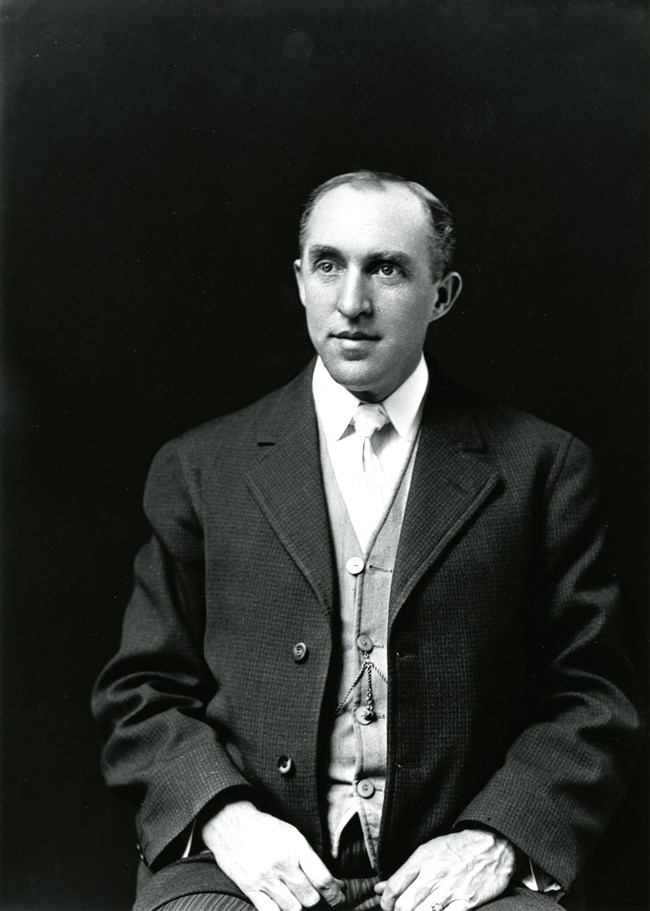
In the mid-1890s Ezra Holleman moved to Washington, DC, and reclaimed the Thompson surname. In 1895 he was a "signwriter." From 1890 to 1891 he worked as a painter. The 1903 city directory lists his occupation as photographer.
According to Dr. Susan Barsy, who has access to Thompson's civilian personnel file, he began working for the US Geological Survey in 1903, after presenting letters of recommendation for a job with the government. Without seeing his file, we can't confirm if the position was temporary or permanent in nature, or full- or part-time. We suspect it was temporary or part-time. It's possible that he traveled to Yellowstone National Park with the Geological Survey in 1903.
In 1904 Thompson is listed in the city directory as a photographer and seller of photographic equipment. He opened a store that sold “stereopticon supplies, cameras, lantern slides,” and other photographic equipment at 1343 F Street NW. A stereopticon is a slide projector that combines two images to create a three-dimensional effect.
Thompson married photographer Sigrid Gustafson on October 13, 1904. She died unexpectedly in December 1905 while visiting her family in Sweden. Her obituary notes that he was "in the employ of the Geological Survey and had been in the West for several months." However, that seems to overstate his role at the time.
The US Register of Civil, Military, and Naval Service lists Thompson as an assistant photographer for the Geological Survey in 1905. His salary was $2 per day, suggesting that he was a temporary employee paid "when actually employed," a common designation in the first few decades of the 1900s. The 1905 entry is the only one for him in that government employee register, which was published every two years.
Although Thompson was working in the West, it's unlikely it was for the Geological Survey. A newspaper article from October 1905 reports that he was working for the Park Transportation Company, shooting films in Yellowstone to accompany the company's winter lecture programs. He did this from at least 1905 to 1907. He traveled with the lecturer in the winters, showing his motion pictures and stereopticons. It's possible that the newspaper editor didn't know that he had left government employment when Sigrid's obituary was published, or that his work for the Geological Survey was on an as-needed basis (if, in fact, that was the case). It seems unlikely that he would have been working for the Geological Survey while spending several weeks each summer filming in Yellowstone and winters traveling with the lecture program, all to benefit a commercial enterprise.
In 1906 the city directory lists him as a photographer rather than a government employee. In August 1907, however, mail was being sent to him at the “Interior Department exhibit” at the "Jamestown exhibition" in Virginia, suggesting he was working for the government again, most likely on a contract for a special project.
Besides a short position with the Geological Survey, prior to 1908 Thompson seems to have had a couple short-term projects or contracts for the government or other entities. Although newspaper articles frequently refer to him as a "government photographer," the articles overlap with dates when he was operating his private businesses or working for others. This has added to the confusion.
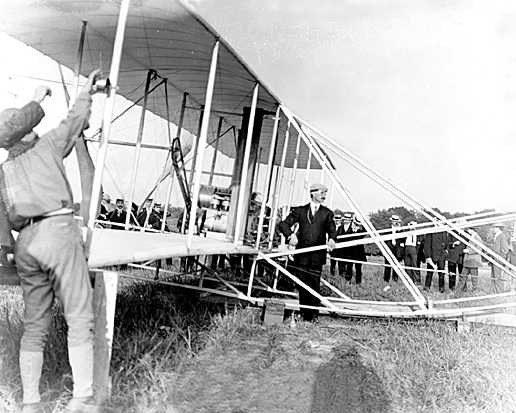
In January 1908 Thompson began working for the Department of the Interior's Bureau of Reclamation as chief of its photographic department. He spent two months that summer in Idaho filming mining operations, a sheep-shearing factory, farming, irrigation methods, and scenic views. His films were shown at the Alaska-Yukon-Pacific Exposition held in Seattle, Washington, in 1909 to advertise Idaho and encourage settlers to move there. During the trip he also shot footage of tree-felling operations for the Forest Service.
Another of his assignments was to travel to Fort Myer, Virginia, to document the first test launch of Wilbur and Orville Wright's Army aeroplane flight in September 1908. The Wright Brothers' Flyer was a bid to meet the US Army Signal Corps aircraft contract for its newly established Aeronautical Division. Although film from this day has been described as "the first government-produced film," Thompson was already creating motion pictures for the government. Thompson's film from test flight has been lost, but it's possible that it was spliced into the US Army Signal Corps film held at the National Archives and Records Administration.
Thompson married his second wife, Nancy Elizabeth Little, around 1909. The 1910 census records that they were living in Washington, DC. The census lists his occupation as photographer but his industry as "photographic gallery," suggesting he was operating a private business rather than (or in addition to) his government service. His marriage with Nancy was brief, as she died on February 18, 1911.
In June 1911 Thompson, in his official capacity of chief photographer, was a passenger on the "Reclamation Special Train" that arrived in Yazoo City, Mississippi. Barsy reports that he was furloughed with pay from his job with the Reclamation Service soon thereafter. He gave public lectures that fall and in early winter 1912. A January 12, 1912, announcement of an upcoming lecture described him as the former chief photographer for the Reclamation Service, but Barsy reports that his appointment with them didn't end until summer 1912.
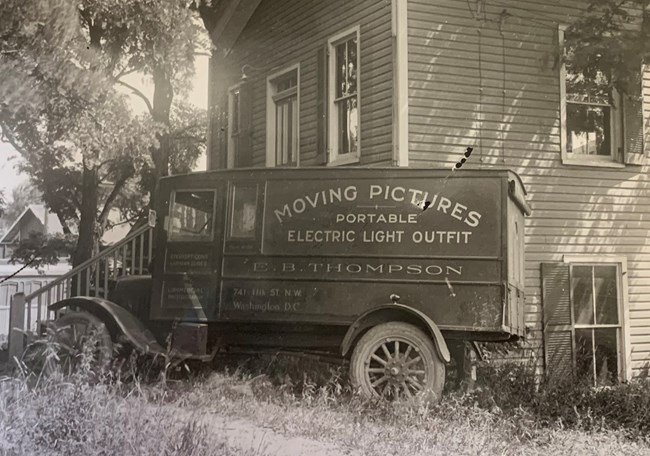
After he left the Reclamation Service, Thompson continued his business while taking contract work from the government. His trip to Alaska in 1914 was taken as part of a government contract. It's also likely that he was working for the government, and even Reclamation again, when he was filming in the Everglades in 1920.
A 1918 advertisement in The Washington Herald referred to him as a commercial photographer. The 1919 Washington, DC, city directory lists Thompson’s business as a photographic laboratory. Various Washington, DC, city directories from the 1920s and 1930s describe Thompson’s business as selling photographic apparatus, photographic equipment and supplies, or photographic supplies.
The 1940 census lists his occupation as “proprietor” of a “motion picture supply co.” In 1944 his business letterhead advertised his store as selling “Sound and Silent Motion Pictures and Slides."
As he prepared for retirement in 1944, Thompson offered to sell his collection of images of Washington, DC to that city's public library. The DC Public Library purchased over 1,800 lantern slides and glass plate negatives from him for $1,000. In the final years of his life, Thompson returned to North Carolina, where he died in Burnsville on April 20, 1951. He is buried in Oakwood Cemetery in Raleigh.
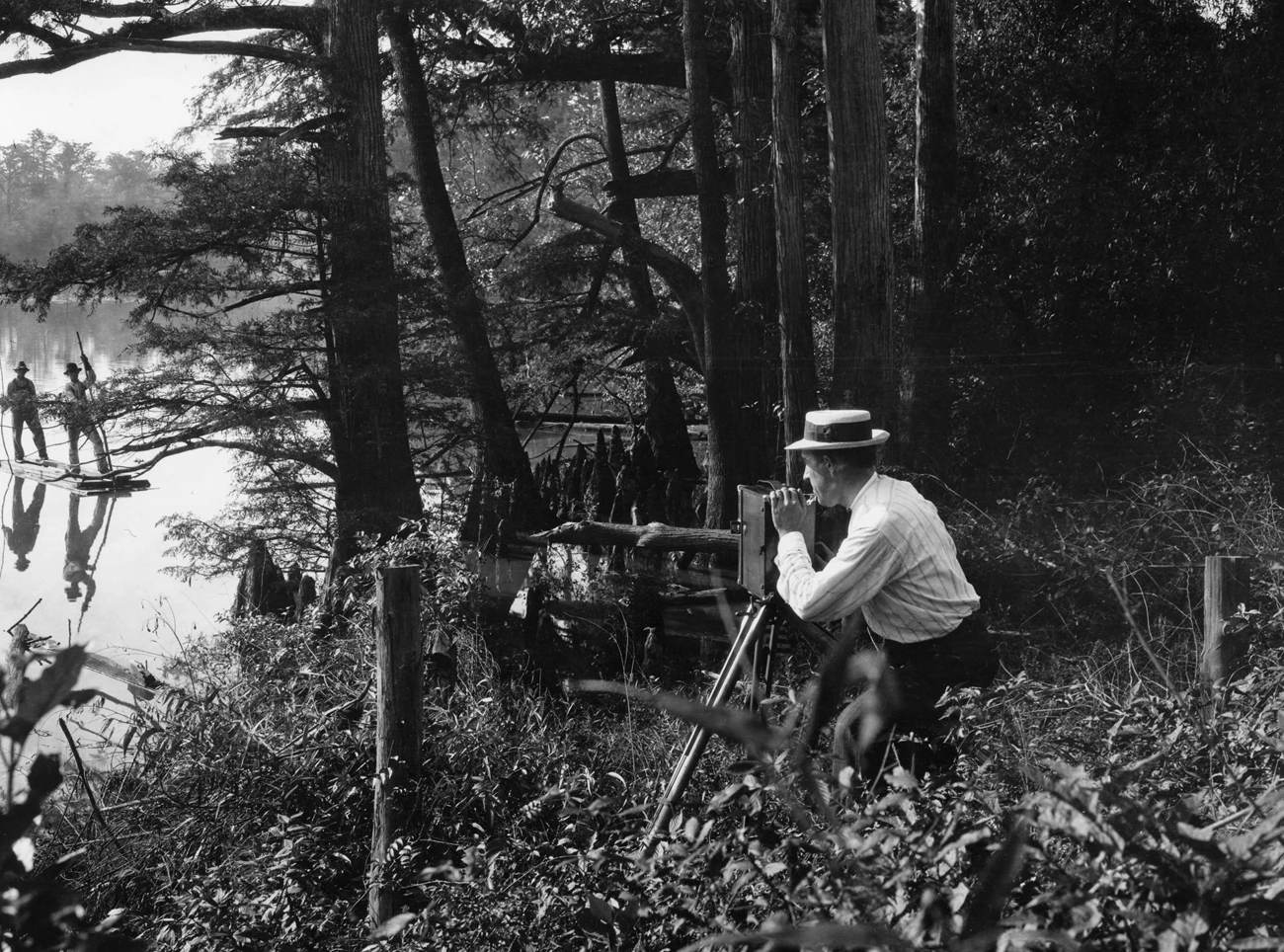
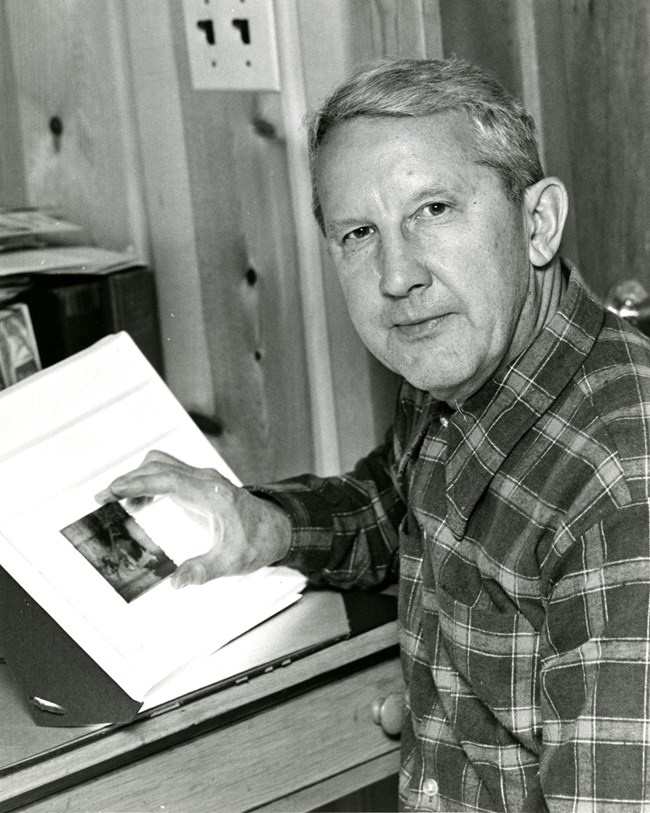
Buying Back History
Thompson's motion picture films appear to be lost to history or are, as yet, unidentified in museum or personal collections. Although many of his Washington, DC, images are in the collections of the DC Public Library and the DC History Center, Thompson's collection contained many more images from other locations, including national parks.
It's not clear what happened to the rest of his images when Thompson moved back to North Carolina or when he died. However, a large collection of his negatives surfaced again around 1973. They were bought by Howard Lehman at an estate sale. He bought three large cabinets of Thompson's film-based and glass-plate negatives and a chair for $20. Recognizing the significance of the images, which feature national parks such as Yellowstone, C&O Canal, Great Falls, George Washington's Birthplace, Shenandoah, Yosemite, and sites in Washington, DC, Lehman donated the approximately 25 linear feet of negatives to the NPS History Collection in 1974.
The NPS History Collection primarily includes servicewide materials created after the NPS was established in 1916. However, as the bureau history collection, it also serves as a repository for collections that span many parks. Most parks have their own collections that are limited to the purposes for which they were established and the natural, cultural, and historical resources inside the park's boundaries. Thompson's negative collection would be outside the scope of a single park and would have to be split up across many parks if it were to be donated to a park. At the NPS History Collection, Thompson's negatives can be maintained as a single collection, in keeping with best professional practices, that reflects a large portion of his work in national parks or areas that have since become national parks.
A few examples of Thompson's images are shared below, together with information we've been able to find to give them further historical context. If you have questions about Thompson's collection, please email the NPS History Collection archivist at HFC_Archivist@nps.gov.
Chesapeake and Ohio Canal
The Chesapeake and Ohio (C&O) Canal was a common subject for Thompson. As a resident of Washington, DC, for most of his adult life, he had easy access to it and its many interesting subjects. Although his images document canal boats, barges, and other commercial activities, he also captured unexpected images of everyday life along the canal from about 1910 until 1924 when the C&O Canal went out of business. Many of them feature women and children.
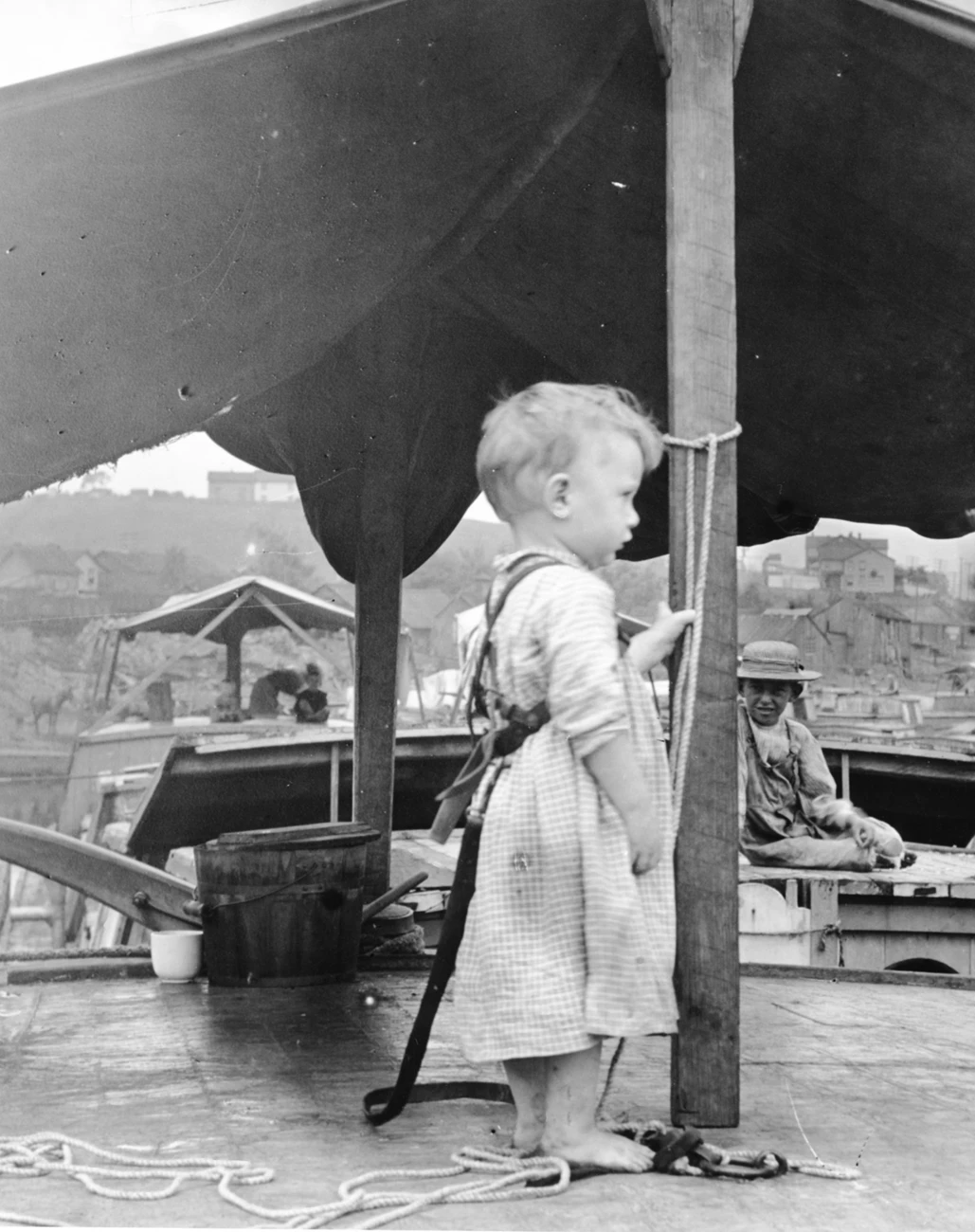
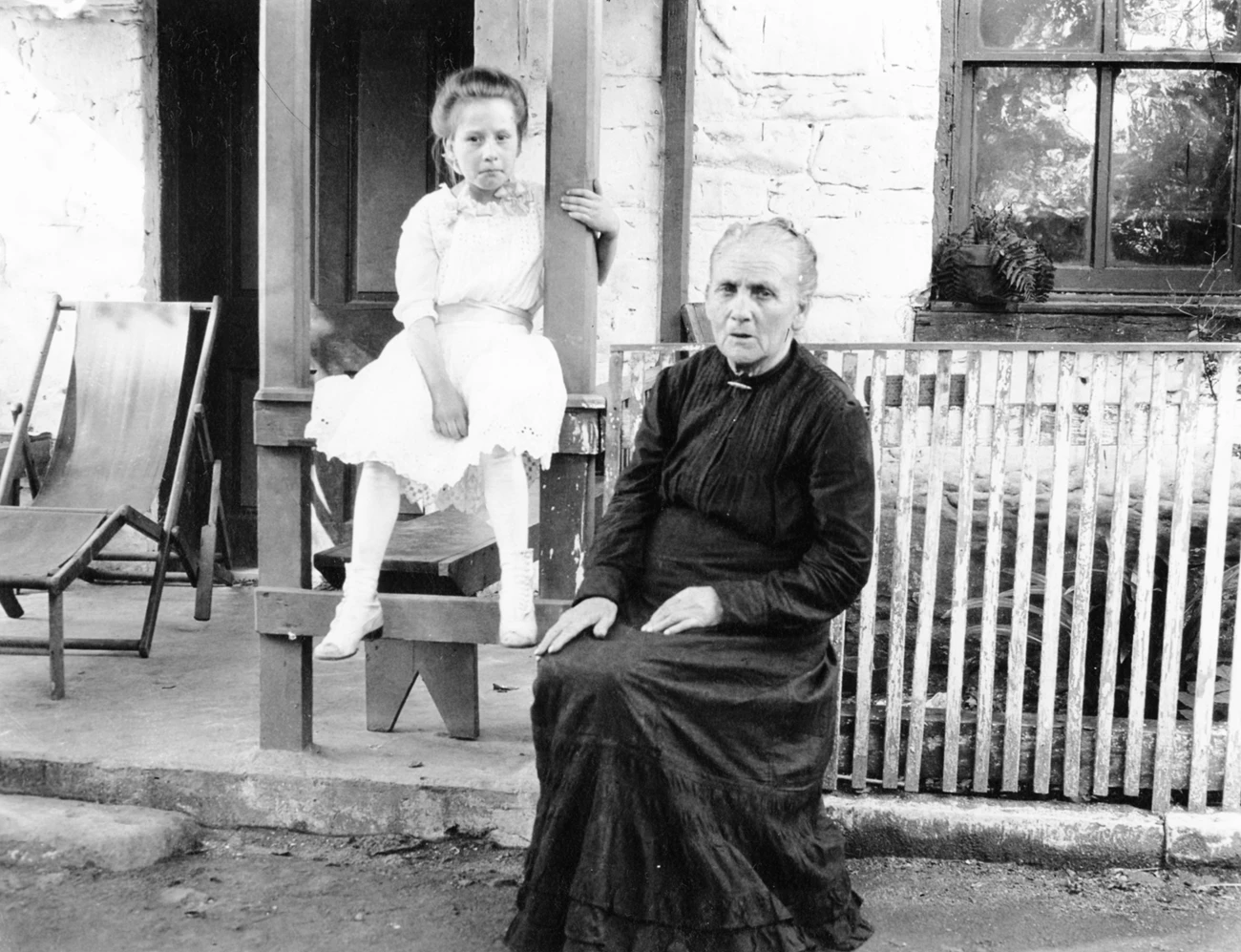
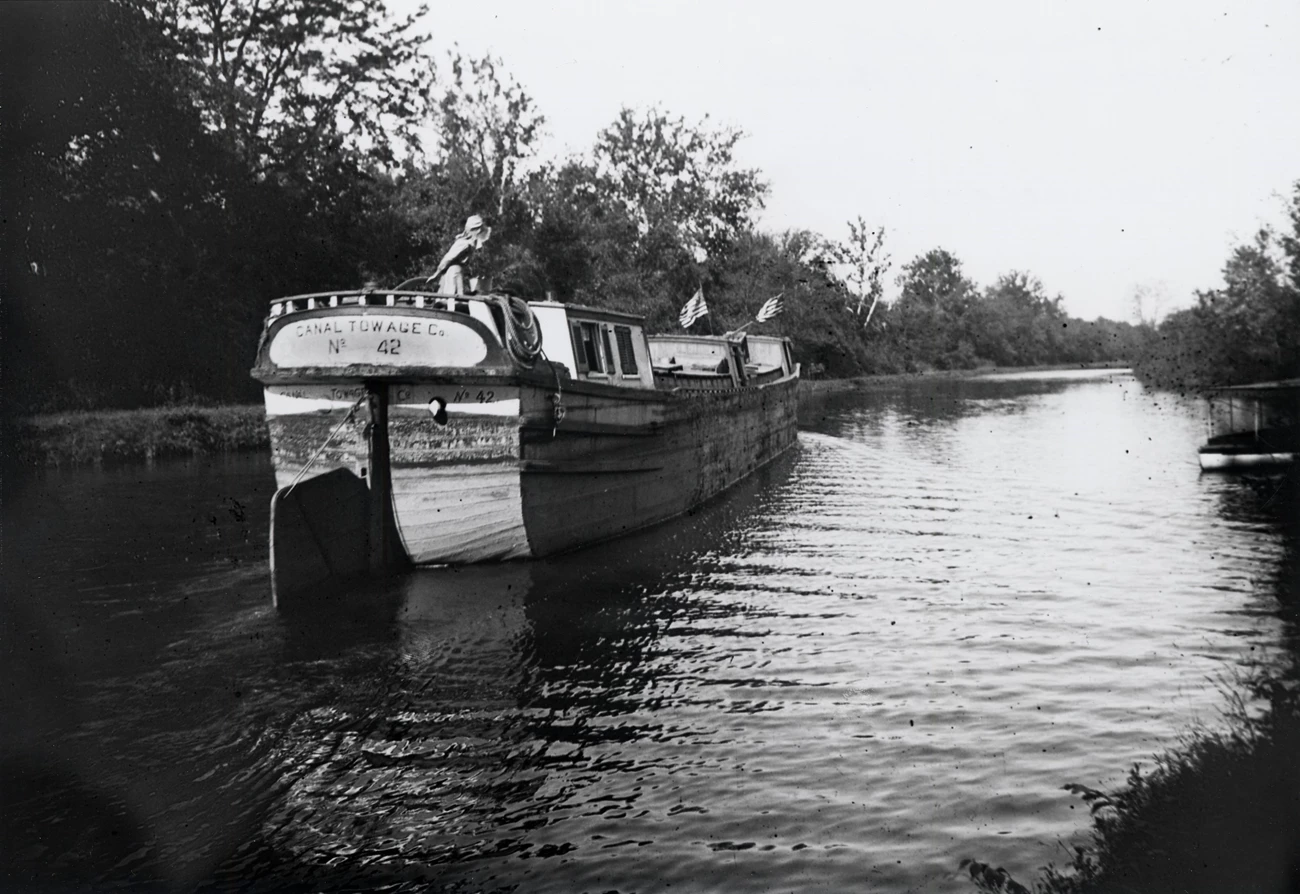
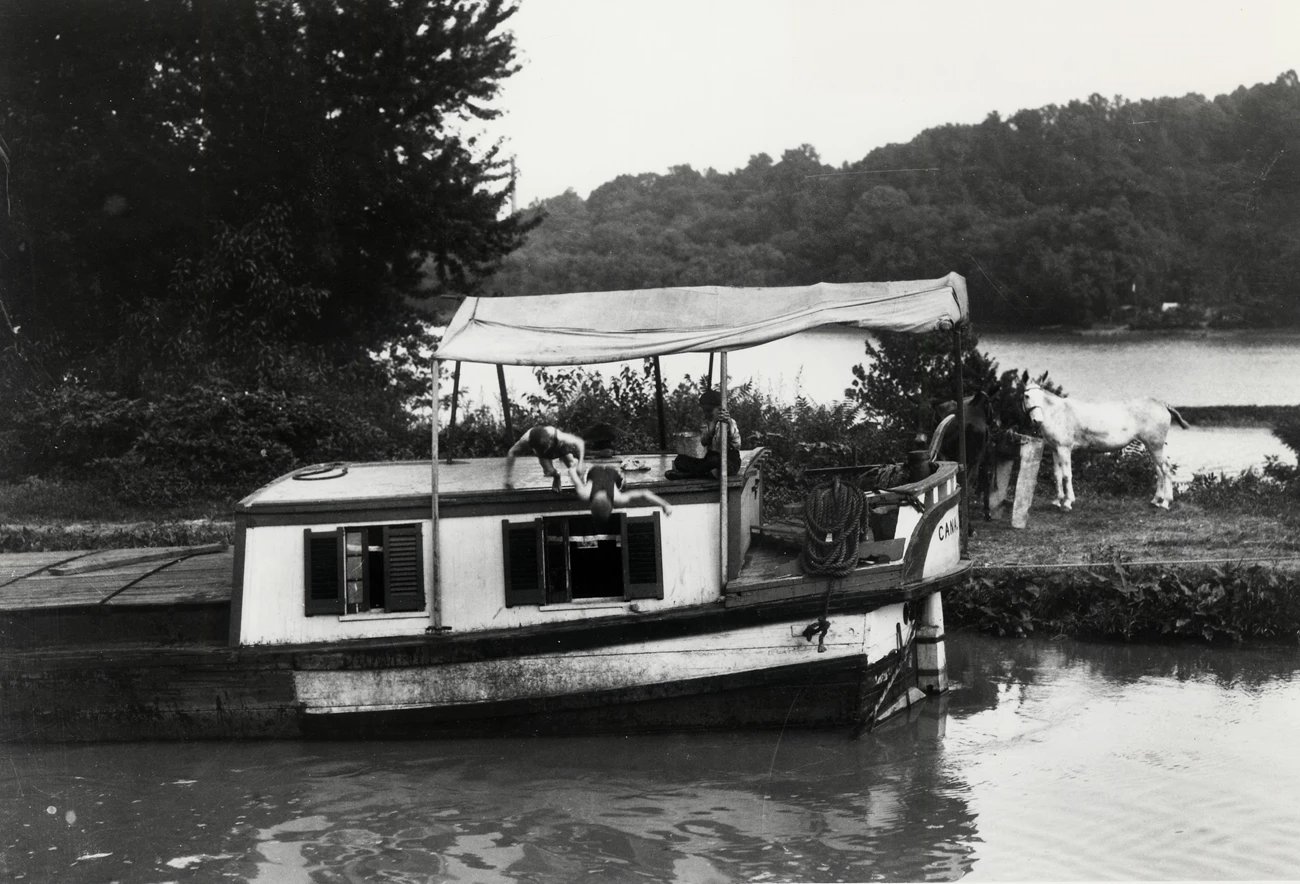
Yellowstone National Park
Thompson visited Yellowstone National Park several times. Based on images in his collection, the earliest documented trip was in 1903. The images known to be from that year feature President Theodore Roosevelt, who visited the park that year. It's likely that Thompson also filmed parts of the park that year because his motion pictures of Yellowstone were shown at the World's Fair in St. Louis, Missouri, in 1904. One newspaper account reported that the number of visitors to Yellowstone more than doubled the next year.
The success of Thompson's films wasn't lost on the railroads and other companies that relied on tourism to Yellowstone National Park. In October 1905 Thompson traveled to the park to make motion pictures as part of a "novel scheme to advertise Yellowstone National Park" by the Park Transportation Company. George Breck, superintendent of the company, began a free traveling lecture program to advertise his company in 1904. The experimental lectures by E.C. Culver were very popular. Breck wanted Thompson's films to add even greater appeal. A newspaper article at the time noted, "For the first time in history moving pictures of wild animals in their native haunts will be exhibited this coming winter." Breck described Thompson as "one of the greatest experts in the line of moving pictures in the country."
Thompson returned to Yellowstone during the summer of 1906 to take more photographs and films for the lecture circuit. After weeks at the park, he accompanied Culver and Breck on speaking tour around the country. They traveled in a private car nicknamed "Yellowstone Park" that was owned and operated by the Northern Pacific Railway. A newspaper article noted:
The views with which Mr. Culver's lecture is illustrated are nearly all of them new, and are the finest which have ever been obtained in Yellowstone National Park. Many of them were secured by Mr. E.B. Thompson, an expert photographer, formerly with the Department of the Interior, who spent many weeks in arduous labor in obtaining them. Mr. Thompson visited every section of the Yellowstone Park and made many of negatives, from which only the very best have been selected.
Thompson also created several motion pictures during his visit. The newspaper account describes them as "exceptionally interesting" and "of the finest quality and might not be duplicated even after months of hard work." They included shots of antelope near the Roosevelt Arch, deer near Mammoth Hot Springs Hotel, bear feedings, geyser eruptions, and tourists visiting the park. Unfortunately these films have not been found.
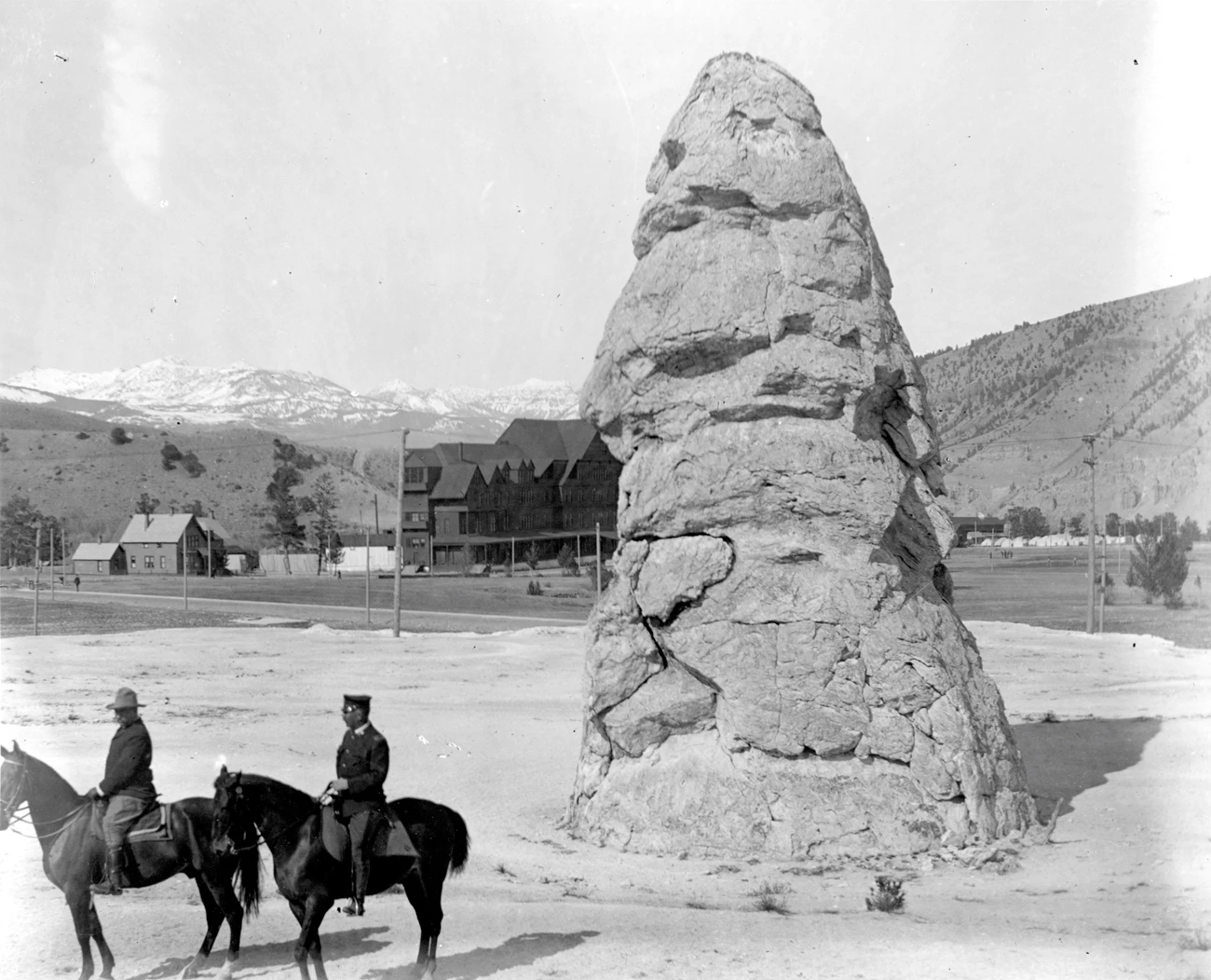
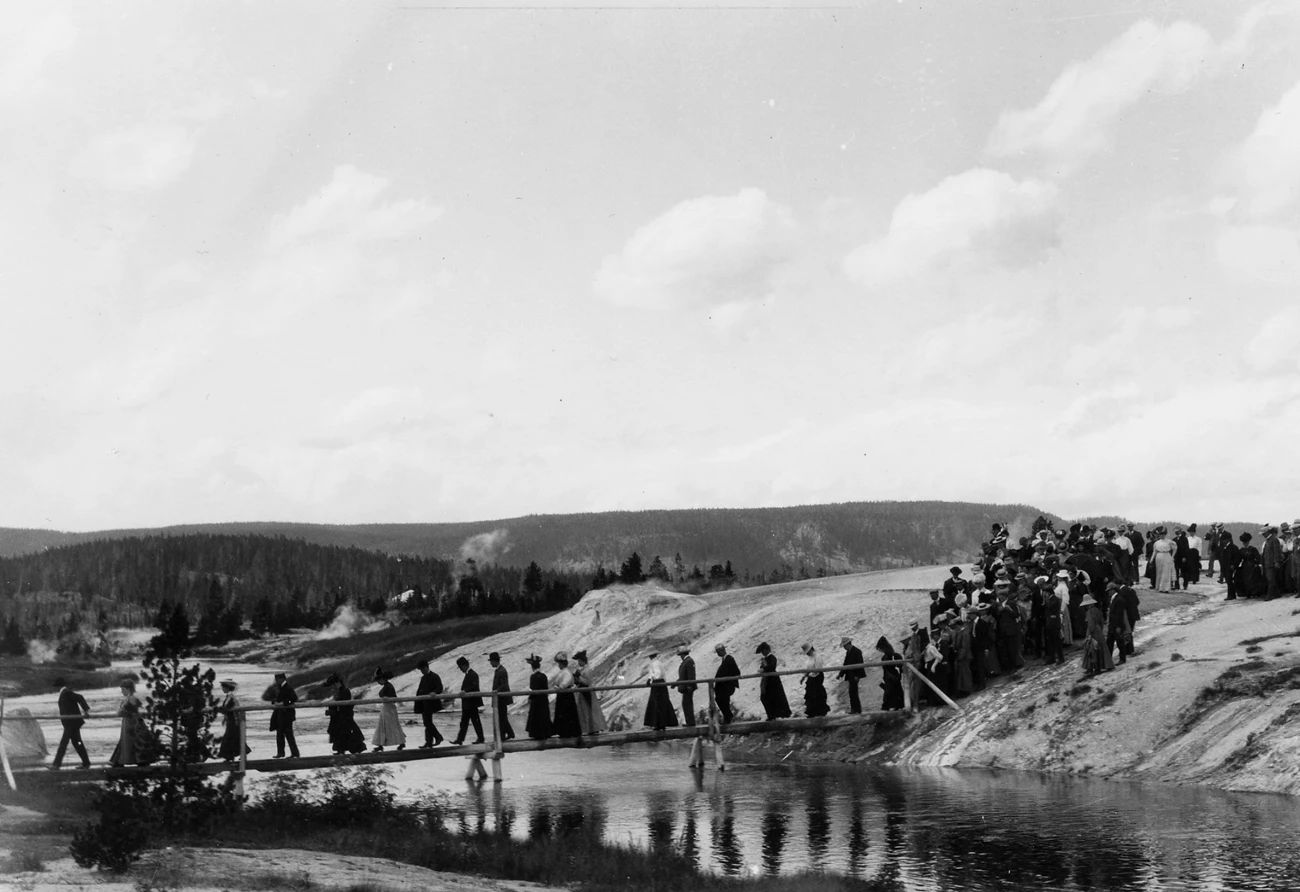

Alaska
On June 21, 1914, Thompson arrived at St. Paul Island, one of the Pribilof Islands in the Bering Sea about 300 miles off the Alaskan mainland, on the R.C. McCulloch. He landed with a team of scientists who were investigating the seal herd that summer. Thompson was contracted by the Government Board of the Panama-Pacific Exposition to make motion pictures of seals and sealing operations. The location of his films is unknown, but several photographs of Thompson capturing his film footage were taken by other members of the party.
An October 1914 article in a Fairbanks, Alaska, newspaper also noted:
Mr. E.B. Thompson, the government photographer who was sent North to get moving pictures for the government exhibit at the Panama Pacific exposition at San Francisco, secured some beautiful scenery along the Taku River while with the E.P. Pond expedition. He also secured a long reel of the celebrated [Taku] glacier in motion. While here Mr. Thompson took pictures of the industrial activities, including scenes among the larger mines and ore reduction plants on both sides of the channel.
Although reported as a "government photographer," Thompson was a contractor. At the same time, Thompson had his private business in Washington, DC.


Washington, DC Metro Area
Although most of Thompson's Washington, DC, images are in collections at other repositories, some images were included in the donation to the NPS History Collection. Subjects include special events, people, buildings, and aerial photographs. Most of the images date to the 1920s. As a resident of Washington, DC, Thompson witnessed and photographed many historic events, including the inaugurations of presidents William McKinley in 1901, Woodrow Wilson in 1913, and Warren G. Harding in 1921.
Thompson also took photographs in Virginia at sites like Wakefield, the birthplace of George Washington, and in Maryland at Great Falls.
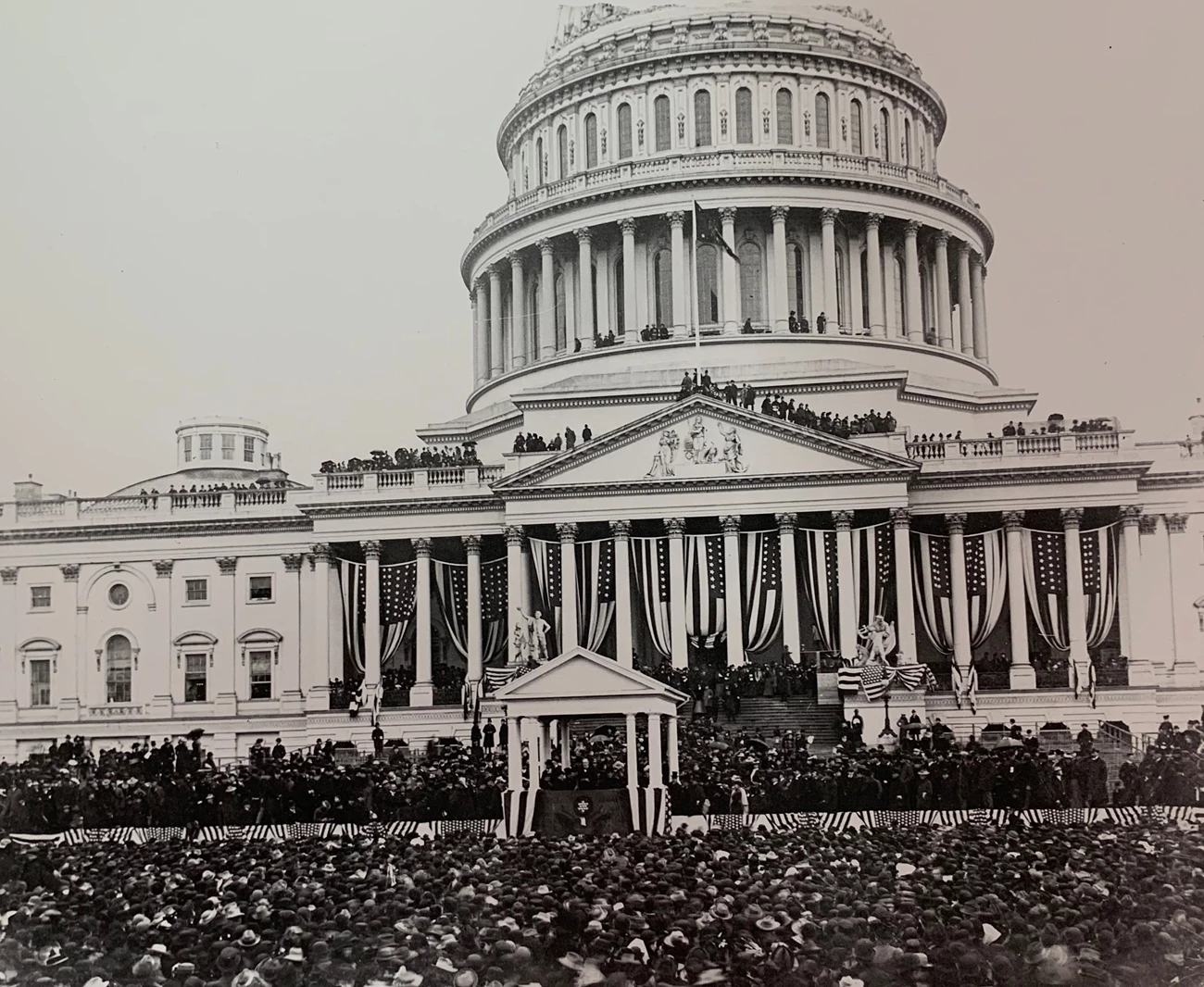

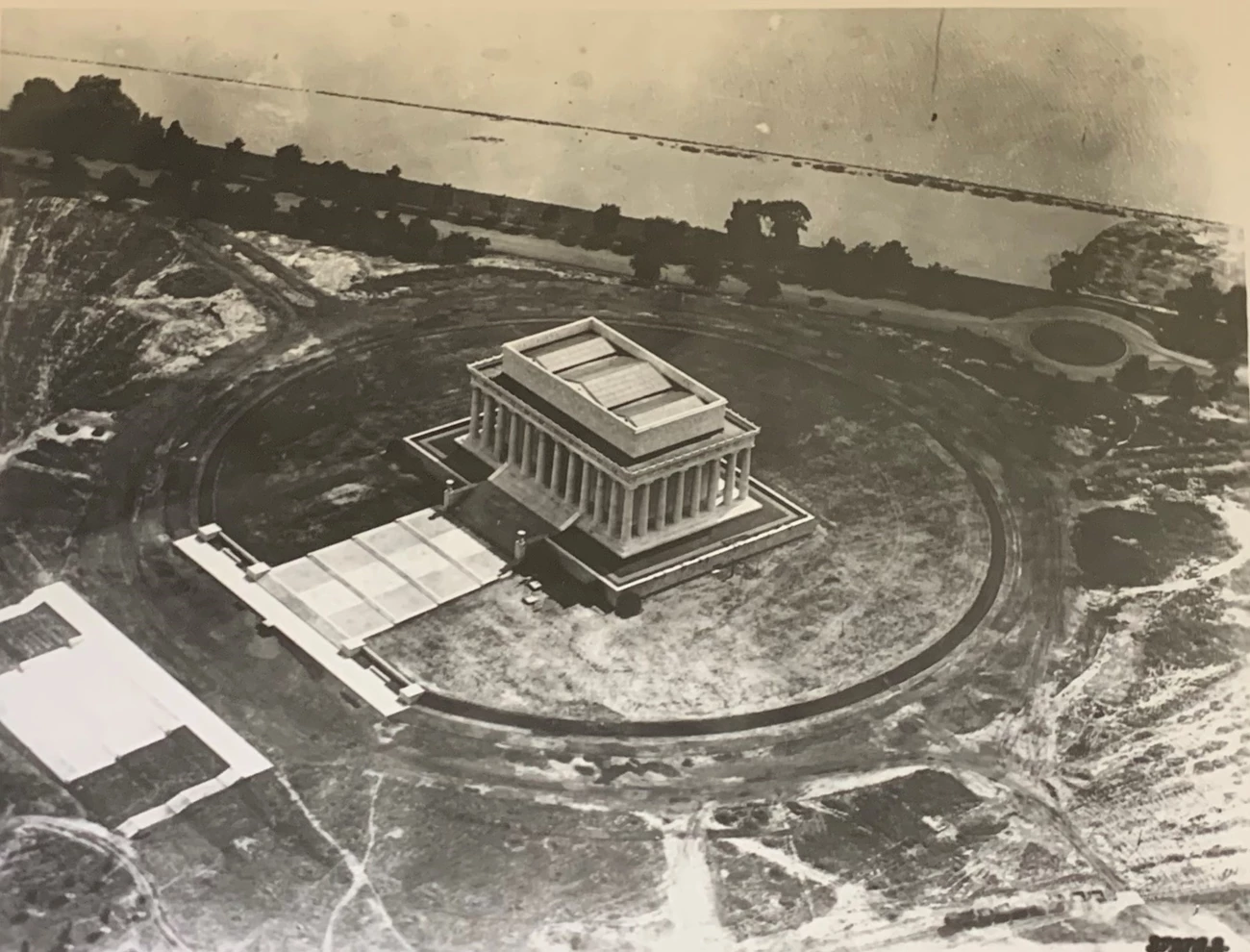

Sources:
-- (1890). Boyd’s Directory of the District of Columbia. Accessed March 19, 2023, at https://babel.hathitrust.org/cgi/pt?id=hvd.hx6a5k&view=1up&seq=6
-- (1895). Boyd’s Directory of the District of Columbia. Accessed March 19, 2023, at https://babel.hathitrust.org/cgi/pt?id=uiug.30112107850049&view=1up&seq=1
-- (1901). Boyd’s Directory of the District of Columbia. Accessed March 19, 2023, at https://babel.hathitrust.org/cgi/pt?id=mdp.39015006986353&view=1up&seq=991&q1=%22Thompson,%20ezra%20b%22
-- (1903). Boyd’s Directory of the District of Columbia. Accessed March 19, 2023, at https://babel.hathitrust.org/cgi/pt?id=njp.32101077270567&view=1up&seq=110&q1=%22Thompson,%20Ezra%20B.%22
-- (1904). Boyd’s Directory of the District of Columbia. Accessed March 19, 2023, at https://babel.hathitrust.org/cgi/pt?id=uiug.30112107850130&view=1up&seq=1
--(1905, October 3). “Hunting Big Game with Camera.” The Butte Daily Post (Butte, Montana), p. 10.
-- (1905, December 27). “Death of Mrs. E.B. Thompson.” The Evening Star (Washington, DC), p. 16.
-- (1907, February 20). “Stereopticon Scenes of Yellowstone Park.” The World News (Roanoke, Virginia), p. 5.
-- (1908, June 16). “Taking Pictures in Gem State.” The Idaho Daily Stateman (Boise, Idaho), p. 3.
-- (1910, November 17). “E.B. Thompson Lectures.” The Evening Star (Washington, DC), p. 9.
-- (1911, June 30). “The Reclamation Special Train.” The Yazoo City Herald (Yazoo City, Mississippi), p. 1.
-- (1911, November 26). “Among the Social Clubs.” The Washington Herald (Washington, DC), p. 18.
-- (1912, January 15). “Talk on Grade Crossings.” The Evening Star (Washington, DC), p. 3.
-- (1912, November 24). “Potomac Literary Club.” The Washington Herald (Washington, DC), p. 15.
-- (1914, October 19). “Movies to Advertise Alaska.” The Alaska Citizen (Fairbanks, Alaska), p. 5.
-- (1918, June 07). “Just a Reminder” [advertisement]. The Washington Herald (Washington, DC), p. 6
Ancestry.com and The Church of Jesus Christ of Latter-day Saints. 1880 United States Federal Census [database on-line]. Lehi, UT, USA: Ancestry.com Operations Inc, 2010. Records of the Bureau of the Census, Record Group 29. National Archives, Washington, D.C.
Barsy, Susan. (2013, December). “E.B. Thompson: His Wives and Times.” American Inquiry. Accessed March 19, 2023, at https://americaninquiry.com/2013/12/02/e-b-thompson-his-wives-and-times/
E.B. Thompson Collection (HFCA 1174) and associated documentation, NPS History Collection, Harpers Ferry, WV.
Holmstrom, Heidi. (2022, September 1). “The Wright Military Flyer Soars on Celluloid: Uncovering the Story of our Oldest Government Film.” Accessed March 19, 2023, at https://unwritten-record.blogs.archives.gov/2022/09/01/the-wright-military-flyer-soars-on-celluloid-uncovering-the-story-of-our-oldest-government-film/
Lindsay, John A., Rappaport, Gina, and Lindsay, Betty A. (2009 August). Pribilof Islands, Alaska: Guide to Photographs and Illustrations. NOAA Technical Memorandum 20. Accessed March 19, 2023, at https://archive.org/stream/pribilofislandsa00lind_1/pribilofislandsa00lind_1_djvu.txt
Pers. comm. (2019, February 11). Dr. Susan Barsy to Nancy Russell, NPS History Collection archivist.
United States Government. (1905). Official Register of the United States, Containing a List of the Officers and Employees in the Civil, Military, and Naval Service Together with a List of Vessels Belonging to the United States, p. 997.
